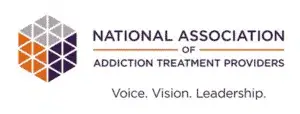Prescription medication misuse is a growing problem in the United States. In 2020 alone, approximately 9.3 million Americans reported taking prescription pain medication for non-medical uses.
Among these misused prescription medications is Percocet, an opioid drug commonly used as a painkiller. Opioids are highly addictive, and over 70,000 drug overdose deaths are caused by these drugs each year. It is important to understand the many risks of drugs like Percocet and learn where to turn for help.
What Is Percocet?
Percocet is a painkiller created by combining oxycodone, an opioid, with acetaminophen, the active ingredient in Tylenol. It is often prescribed for short-term use to treat moderate to severe pain, typically after a surgery or injury. Percocet affects opioid receptors in the brain and central nervous system, suppressing brain signals throughout the body and changing how the brain perceives pain.
How Do People Get Addicted to Percocet?
Like other opioid drugs, Percocet stimulates the release of chemicals called endorphins in the brain, which produces a euphoric and relaxing feeling. The release of endorphins occurs naturally in response to behaviors that are advantageous for the brain to reinforce. When endorphins are artificially released by a substance, however, the brain reinforces the behavior of using that substance. Continued Percocet use can create a cycle of reinforcement, making a person want to continue using more and more of the drug. This is what leads to addiction.
This Season, Give Yourself the Gift of a Fresh Start.
Whether you are struggling with addiction, mental health or both, our expert team is here to guide you every step of the way. Don’t wait— reach out today to take the first step toward taking control of your life.
Signs of Percocet Abuse
There are many different signs that a person may be abusing Percocet. These signs can be physically related to the effects of the drug, but they can also involve psychosocial changes. If too much Percocet is used, signs of an overdose may also be present.
Physical Signs of Percocet Abuse
Physical signs of Percocet abuse are often caused by the side effects of opioid use. These include:
Drowsiness or tiredness
Confusion
Difficulty holding a normal conversation
Nausea and vomiting
Constipation
Constricted pupils
Slowed breathing
Psychosocial Signs of Percocet Abuse
Psychosocial signs of Percocet abuse are related to behavior changes that occur when using drugs. Many of these signs are not necessarily specific to Percocet, but they may indicate that an addiction is present. These signs include:
Spending time with different groups of friends
Poor hygiene
Becoming more withdrawn
Losing interest in activities that were previously interesting
Being more sad or irritable
Eating less
Becoming more anxious or nervous
Sleeping at different hours or on a new pattern
Poor performance at work or school
Legal problems
Signs of Percocet Overdose
A Percocet overdose can be fatal, and being able to recognize one can help you save a person’s life. An overdose also indicates that someone is struggling with drug use. Signs of a Percocet overdose include:
Becoming unresponsive or very difficult to keep awake
Blue or purple color around the lips or in the nail beds
Slow, gasping or absent breathing
Slow heart rate
Drug overdoses can be fatal. If you suspect someone is experiencing a Percocet overdose, administer naloxone (Narcan) if you have it available and call 911 immediately. Do NOT be afraid to seek help. If you do not have access to a phone, contact Web Poison Control Services for online assistance.
Percocet Addiction Consequences
The consequences of Percocet addiction are often far-reaching. They can impact a person’s physical and mental health as well as their relationships and finances. Addiction can also lead to a variety of legal troubles.
Short-Term Physical Consequences
The short-term physical consequences of Percocet addiction involve the side effects of Percocet and the complications that they can cause. Some of the short-term effects of Percocet addiction include:
Constipation
Increased risk of injury
Risk of overdose
Problems concentrating
The short-term effects of opioid addiction are particularly concerning, as overdose or injury caused by opioid intoxication can be fatal.
Long-Term Physical Consequences
The long-term consequences of Percocet use are not as severe as they are for some other substances. However, long-term effects can include decreased sex drive, chronic constipation and dependence. Dependence is when the body begins relying on Percocet to function normally, and it causes withdrawal symptoms to occur when Percocet use is stopped.
Legal Consequences
Using Percocet in a way other than it was prescribed is illegal. However, law enforcement agencies typically focus more on stopping the illegal sale and trade of Percocet. This may not seem like a problem to those with prescriptions, but many people who develop Percocet addiction will eventually find themselves getting Percocet or another drug from illegal sources. This creates an increased risk of legal problems.
Financial Consequences
Addiction quickly becomes something that cannot be stopped, even when it is creating negative effects. This can affect people financially, as they will often put the cost of maintaining a Percocet addiction ahead of other financial needs. An addiction will almost always eventually create a significant financial strain on someone.
Social Consequences
People who are struggling with addiction will often find themselves trying to hide their addiction. This eventually requires spending less time with others and avoiding social interactions while intoxicated with Percocet. The more time spent using Percocet, the worse this social aspect of addiction becomes.
Outlook for a Percocet Addiction
Recovery from Percocet addiction is certainly possible, but it can be a difficult journey. One study found that it takes an average of 8.4 years of opioid use before someone with an opioid addiction finds lasting recovery. Additionally, research shows that only about one-third of people who stopped using opioids were able to maintain sobriety for at least 10 years. Researchers noted that people who received ongoing treatments and medications were likely to recover faster and more effectively than those who did not get correctly treated.
Percocet Withdrawal and Detox
Percocet withdrawal occurs because the opioid receptors in the brain adjust their function to account for the presence of opioids. When Percocet use ends, the receptors have to adjust to the absence of Percocet before they begin functioning normally again.
The symptoms of Percocet withdrawal can be very uncomfortable but are rarely dangerous. When withdrawing from Percocet, early symptoms may include:
- Fever
- Sweating
- Elevated blood pressure
- Anxiety
- Sweating
- Increased tear production
- Pain
- Runny nose
As Percocet withdrawal progresses beyond 48 hours, symptoms may include:
- Abdominal cramping
- Dilated pupils
- Goosebumps
- Nausea and vomiting
- Diarrhea
Withdrawal symptoms will normally not last for more than five to seven days.
Is It Safe to Detox From Percocet at Home?
Detoxing from Percocet is rarely dangerous. Although you should speak with a physician prior to detox, you can typically detox from Percocet at home without significant danger. If withdrawal symptoms are expected to be severe, detoxing at a professional facility is recommended: symptoms like vomiting and diarrhea can lead to dehydration, which can become dangerous.
While detoxing from Percocet at home is relatively safe when compared to other types of withdrawals, it can still be very uncomfortable. Some people may lose heart during the process and relapse back to using Percocet to avoid uncomfortable withdrawal symptoms. Seeking professional help can help someone who struggles with detox achieve lasting recovery.
Percocet Addiction Treatment
Professional treatment for a Percocet addiction can improve the chances of lasting recovery. Treatment typically involves two key steps: detox and rehab. Detox is the process of stopping Percocet and allowing your body to eliminate the drug from its bloodstream. The main focus of detox involves managing the symptoms of withdrawal and helping you avoid relapse.
Rehab is the process following detox. It normally involves a combination of counseling, group therapy, medications and a variety of other therapies. These approaches are all designed to help you learn how to compensate psychologically for the absence of Percocet and learn healthier ways to cope.
Rehab will usually take place in either an outpatient or inpatient setting. Outpatient treatment allows you to go about your normal life while routinely visiting the rehab clinic for treatment. Inpatient treatment is more intensive and designed to create a strong foundation for long-term recovery. Inpatient treatment requires you to live on-site at the treatment facility, which allows you to stay focused on your treatments and avoid outside triggers.
Our Facilities
Finding help for Percocet addiction may seem daunting, but there are many resources available to help you get started on your recovery journey. The Recovery Village offers a full continuum of care at that includes:
- Medical detox
- Inpatient treatment
- Partial hospitalization programs
- Outpatient services
- Long-term aftercare
Our evidence-based approach to treatment can help you address the underlying causes of addiction and build a strong foundation for lifelong recovery. We also provide ongoing support and relapse prevention services after the treatment process ends, helping you maintain sobriety when faced with difficult situations throughout your life. In addition to our Palmer Lake rehab center, The Recovery Village operates a number of facilities throughout the country, allowing you to travel for treatment or access a location that’s closer to home.
If you or someone you love is ready to find treatment for Percocet abuse and addiction, our caring experts are here to help. Find a location today to learn more about addiction treatment programs that can work well for your recovery needs.









